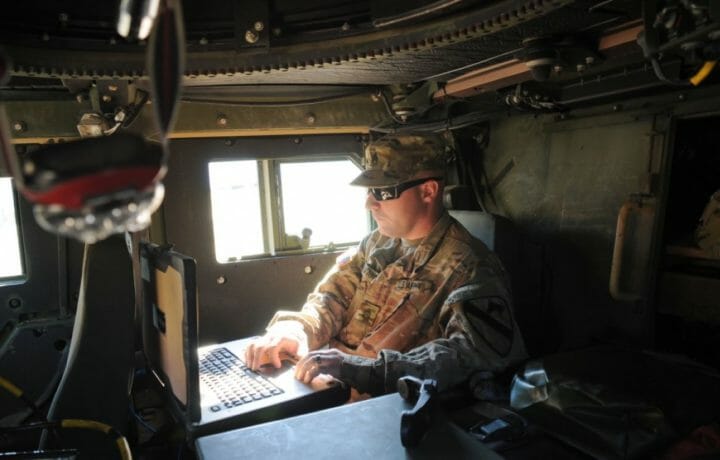Are you looking to read between the signals from air, sea, land, or space? Electronic warfare, or EW as it is more commonly known, is an essential skill in high demand in the cleared industry. EW uses the electromagnetic spectrum to protect U.S. troops and assets, providing situational awareness in the battlespace and countering electronic attacks.
Path to Electronic Warfare
Military service is the most common path to a civilian career in EW, but civilians looking to jump into EW should consider undergraduate degrees in electrical engineering. There are a variety of career levels within EW to consider, whether you’re interested in a technician, specialist, or engineering-level role. Each level requires a slightly different skillset and technical or educational background.
EW positions involve a variety of electronics, battlefield communications, and manned and unmanned vehicles. EW technicians can support pilots and make sure crews are safeguarded from electronic attacks. They may develop new technologies for large companies like BAE Systems or Lockheed Martin, or support projects on smaller contracts or with government agencies.
Under the sea technicians provide detection, analysis, threat warning and protection from Anti-Ship Cruise Missiles, and perform other maritime EW duties from submarines or guided destroyer missiles. US Navy EW centers provide wide-ranging technical expertise for all surface EW systems, including both above the water ships and submarine-based systems.
Locations for Electronic Warfare Positions
Electronic warfare positions are located across the globe and are often concentrated around U.S. Air Force or Navy facilities. As the U.S. continues to re-orient toward great power competition against Russia and China, EW threats remain a critical focus. Dependence on GPS, satellites, and electronic communication mean both offensive and defensive electronic warfare are critical to U.S. national security.



